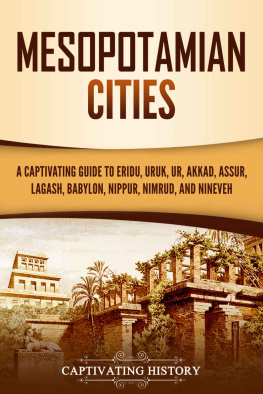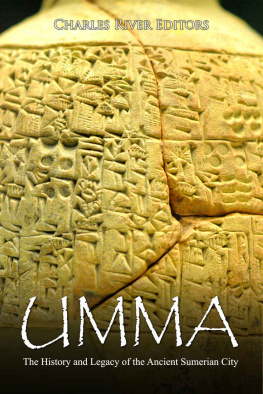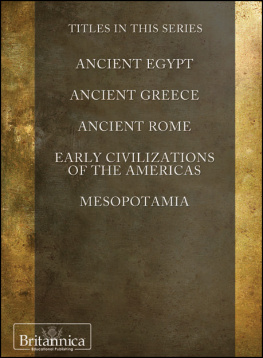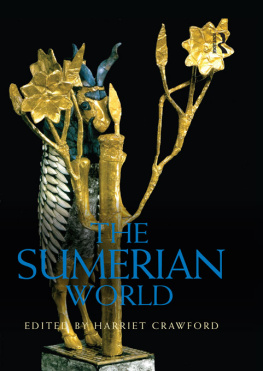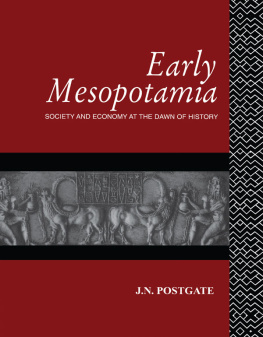Charles River Editors - Eridu: The History and Legacy of the Oldest City in Ancient Mesopotamia
Here you can read online Charles River Editors - Eridu: The History and Legacy of the Oldest City in Ancient Mesopotamia full text of the book (entire story) in english for free. Download pdf and epub, get meaning, cover and reviews about this ebook. year: 2017, publisher: Charles River Editors, genre: History. Description of the work, (preface) as well as reviews are available. Best literature library LitArk.com created for fans of good reading and offers a wide selection of genres:
Romance novel
Science fiction
Adventure
Detective
Science
History
Home and family
Prose
Art
Politics
Computer
Non-fiction
Religion
Business
Children
Humor
Choose a favorite category and find really read worthwhile books. Enjoy immersion in the world of imagination, feel the emotions of the characters or learn something new for yourself, make an fascinating discovery.
- Book:Eridu: The History and Legacy of the Oldest City in Ancient Mesopotamia
- Author:
- Publisher:Charles River Editors
- Genre:
- Year:2017
- Rating:5 / 5
- Favourites:Add to favourites
- Your mark:
Eridu: The History and Legacy of the Oldest City in Ancient Mesopotamia: summary, description and annotation
We offer to read an annotation, description, summary or preface (depends on what the author of the book "Eridu: The History and Legacy of the Oldest City in Ancient Mesopotamia" wrote himself). If you haven't found the necessary information about the book — write in the comments, we will try to find it.
Emerging from the desert flats of southern Iraq can be seen the remains of a large mound, approximately 1750 feet x 1750 feet in size, surrounded by several smaller mounds. Known today as Tell Abu Shahrain or in the ancient world as Eridu, this site contains some of best examples of the Ubaid culture, and it was one of the first urban centers of civilization in southern Mesopotamia, if not the first itself.
Many famous stories came from the mythical landscapes of Iraqs deep south. In the literature of ancient Sumer, Eridu was regarded as the primordial city, the first urban center, believed to have existed long before the great mythical Flood that wiped out human culture in the Book of Genesis and other earlier traditions. It was to places like this that Western explorers first came in the 19th century, searching for the origins of the lands which the Bible described as the cradle of the human race. In doing so, they discovered that Eridu was also a real place.
The astonishing site is located about 8 miles southwest of the Sumerian city of Ur, and when it was first excavated in the mid-19th century, Western archaeologists were confused as to how a city as large as this could have existed in such a vast and waterless desert. But Eridu is positioned on the edge of the great alluvial plain of Sumer, a wild and beautiful marshland where the Tigris and the Euphrates meet. This was the Biblical Garden of Eden, an ancient landscape that was renowned for its fertility in the past.
To many Westerners, Iraqs history and culture were a blank before 1991, but ironically, as war engulfed the region, it helped underscore the importance and influence of the area on Western civilization. It was here, in the ferocious landscape of south Iraq, old Sumer, that the first laws, science, and cities came into being. Eridu is a place of extraordinary significance for the study of the earliest stages of civilization in history, and it is one of the best examples of cultural continuity in Mesopotamia, from the earliest prehistoric stages in which settlements emerged to the later historic periods. Eridu had a special status, not as the residence of a ruling dynasty of kings but for its religious significance; a series of temples were built there, devoted to the patron god of the city, Enki. Each one was built upon the ruins of its predecessor, and each one represents the architectural, religious, and social changes that occurred at the site throughout its history.
Eridu: The History and Legacy of the Oldest City in Ancient Mesopotamia examines the tumultuous history of one of the most important cities of antiquity. Along with pictures depicting important people, places, and events, you will learn about Eridu like never before.
Charles River Editors: author's other books
Who wrote Eridu: The History and Legacy of the Oldest City in Ancient Mesopotamia? Find out the surname, the name of the author of the book and a list of all author's works by series.










